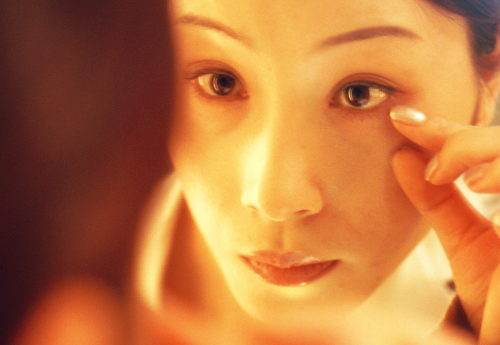Body dysmorphic disorder (BDD) is a mental illness characterized by a persistent preoccupation with at least one perceived defect or flaw in a person’s physical appearance, which may not be observable to others, or appears only slight. Preoccupations can focus on any part of the body, but the most common areas are the skin, hair, and nose. These concerns are unwanted, usually difficult to resist or control, and on average occur three to eight hours per day. A person with BDD experiences significant distress, and the ability to carry out everyday functions is affected. BDD affects an estimated 2.4% of American adults.
Individuals with BDD suffer from heightened body shame, stemming from both internal and external sources. This is to say that individuals with BDD tend to have a negative perception of their own appearance and they tend to believe that others judge their appearance to be undesirable, which can cause heightened levels of anxiety.
There is no one cause of body dysmorphic disorder, but research suggests that both environmental and genetic factors have an influence. High rates of abuse and neglect during childhood have been associated with body dysmorphic disorder. Also, there is evidence to suggest that the disorder is more likely to occur in individuals that have parents or siblings with obsessive-compulsive disorder.
At some point during the course of the disorder, individuals develop and perform at least one body-focused repetitive behavior (BFRB) or mental act in response to the preoccupation. These are impulse control behaviors that involve compulsive and repeated actions related to an individual’s physical appearance.
Examples of repetitive behaviors or mental acts are:
- Hair pulling
- Skin picking, scratching, or carving
- Excessive grooming
- Mirror checking
- Nail biting
- Cheek biting
- Reassurance seeking
Warning Signs
- Spending excessive time in front of the mirror or purposely avoiding mirrors
- Going out of the way to avoid contact with others, especially situations that are perceived to be socially intense (special occasions like birthdays, crowded events, classroom settings, public speaking)
- Expressing hatred, disgust, or general dissatisfaction with either their general physical appearance or specific body parts.
- Expressing a strong desire to get cosmetic surgery or other cosmetic procedures
- Spending more money than the average person on grooming or makeup products
- Being hesitant to go out during the day
- Attempting to hide or camouflage parts of their bodies and using makeup, clothes, hats, scarves, etc.
- Lateness or anxiety in the morning
- Seeking reassurance about their physical appearance
- Making comparisons to others
- Withdrawing from previously enjoyed and/or valued activities
- Expressing thoughts of suicide and/or hopelessness about their situation
Individuals with body dysmorphic disorder often seek out cosmetic treatments to “fix” their perceived flaws. These treatments can vary from cosmetic surgery to other procedures such as skin smoothing treatments, and they can cost thousands of dollars. Furthermore, they rarely improve BDD symptoms. More often, individuals report an increase in concerns about their appearance or develop new areas of concern following cosmetic treatment.
Evidence suggests that both medication and cognitive behavioral therapy (CBT) may effectively reduce symptoms of body dysmorphic disorder.
- Medication: Successful treatment may include the use of selective serotonin reuptake inhibitors (SSRIs), which are antidepressants that also help reduce obsessive thoughts and compulsive behaviors.
- Cognitive-behavioral therapy (CBT): Cognitive-behavioral therapy targets BDD-related thoughts and behavior patterns in order to reduce repetitive behaviors. Individuals first learn how their thinking patterns contribute to their symptoms and then how to change their thoughts so that symptoms are less likely to occur.
Learn more about mental health treatments.
Check out MHA’s self-help worksheet or interactive tool for help addressing negative thought patterns.
Research suggests that major depressive disorder (clinical depression) often coexists with body dysmorphic disorder. Other common co-occurring illnesses include social anxiety disorder, obsessive-compulsive disorder, and substance-related disorders.
Anxiety and Depression Association of America
www.adaa.org
Body Dysmorphic Disorder Foundation
www.bddfoundation.org
The International OCD Foundation
bdd.iocdf.org
Treatment Finder: https://iocdf.org/find-help/
Body Dysmorphic Disorder (BDD) and Youth
Symptoms of BDD typically begin during adolescence, most commonly by 12-13 years old.
Trichotillomania (Hair Pulling)
Trichotillomania is a body-focused repetitive behavior classified as an impulse control disorder which involves pulling out one's hair.
Excoriation Disorder (Skin Picking or Dermatillomania)
This disorder is characterized by repeated picking at one’s own skin which results in skin lesions and causes significant disruption in one’s life.






